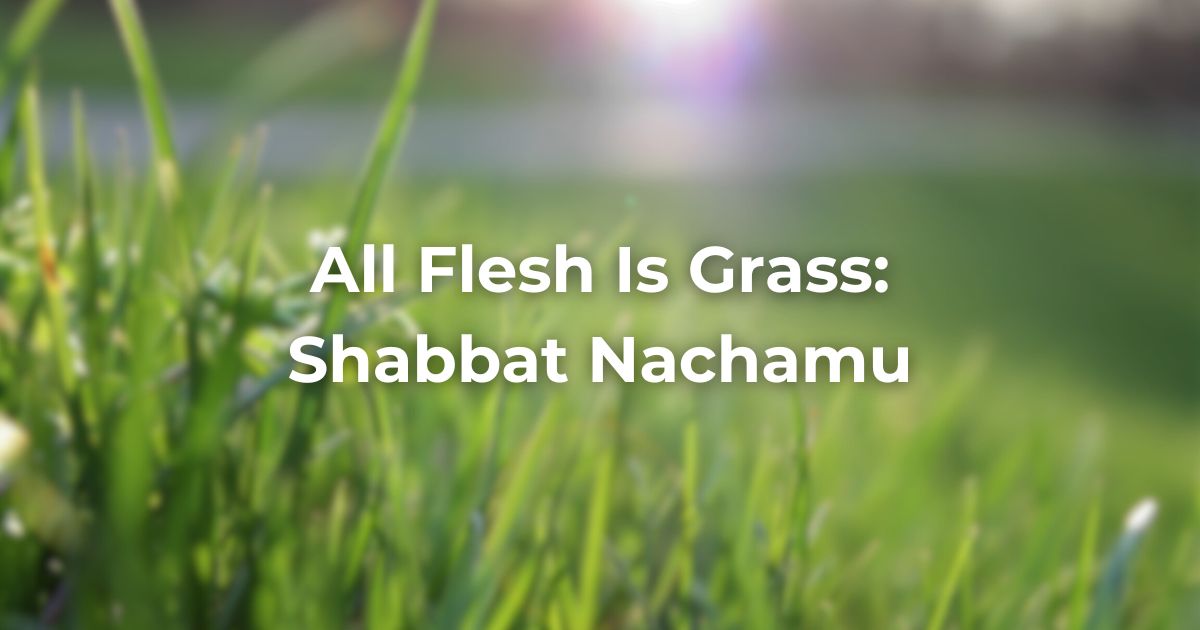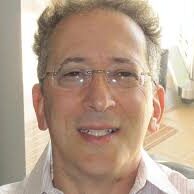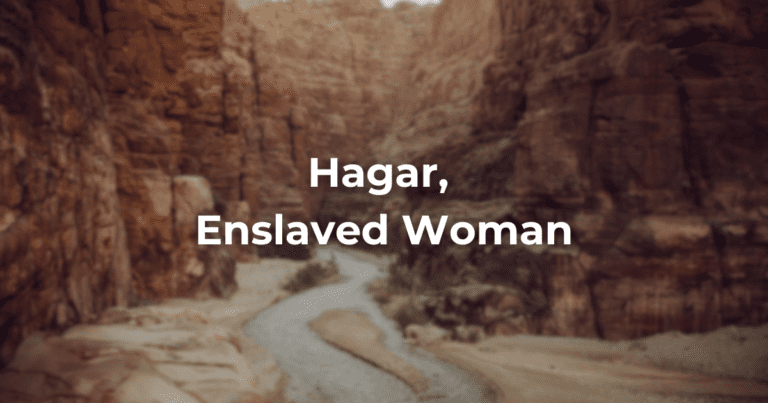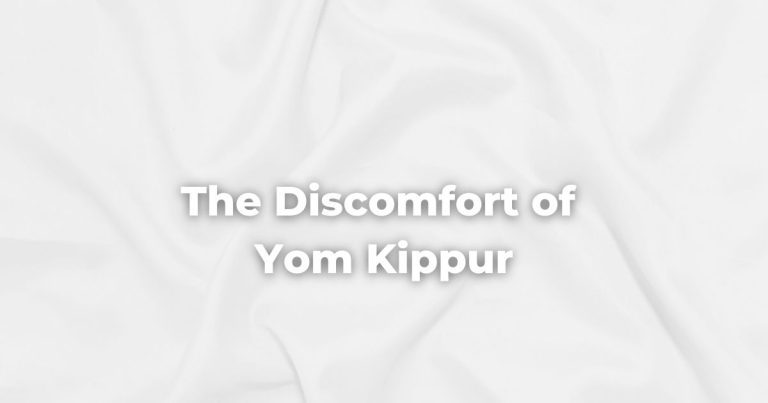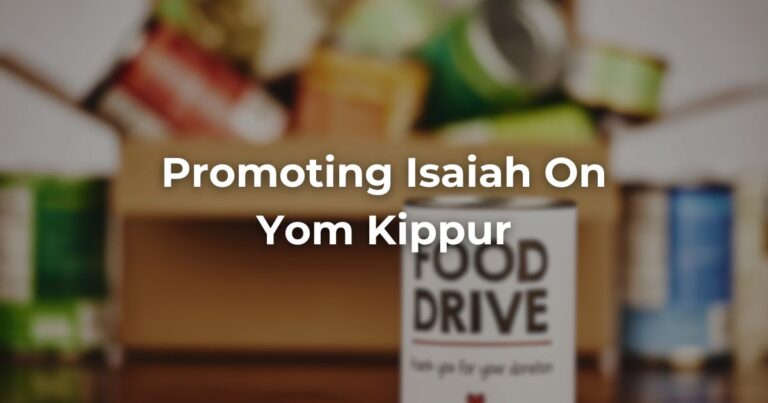On the first Shabbat following Tishah B’Av, we read the first of seven haftarot of nechemta, comfort, that follow Tishah B’Av and lead us into the New Year.
These follow three weeks of meditating on the vagaries of Jewish history which culminated in Tishah B’Av. These haftarot have no necessary linkage to the TorahRefers to the first five books of the Hebrew Bible, the Tanakh, also called the Five Books of Moses, Pentateuch or the Hebrew equivalent, Humash. This is also called the Written Torah. The term may also refer to teachings that expound on Jewish tradition. Read more reading. Rather, they give us a framework in which to grow into the New Year with grounding, hope, resolve, and spiritual fortitude.
In this haftarah, the resuscitation and revival of Jerusalem in the wake of the first Tishah B’Av tragedy, the destruction of the city, including the Temple, serve as our archetype.
The haftarah begins, Jerusalem had lain waste for 50 years. To make the wilderness bloom, those who returned from Persia had work to do, so the prophet begins by urging the leadership, “Nachamu–nachamu ami,” “Comfort–comfort my people.”
But how do we find comfort, and how do we comfort others?
We just emerged from our observance of Tishah B’Av but live in a Tishah B’Av-like calamitous world. We live in a time of rising extreme weather events, rising gun violence, and rising racism, queerphobia, and other forms of hate.
The economy, still in the wake of the pandemic, is actually better than expected, but still feels uncertain. Prices of just about everything have seemingly risen wildly. And for us Jews, we are still traumatized by October 7, the subsequent and ongoing war in Gaza, and the alarming rapid rise in antisemitism globally.
What is our prophet’s message? Kol habasar cha-tzir, “All flesh is grass.”
What can this mean as the first post-Tishah B’Av haftarah of comfort?
Be like chatzir, plush green grass, be like tzitz hasadeh, be like a plant that blooms in the field, and you’ll get by, you’ll be fine… you’ll even thrive… But how do the prophet’s words reassure us? What can we learn from grass and from plants? Let me offer three lessons.
First, plants allow their struggles to make them stronger.
How does a tree, for example, respond when it’s left by itself, exposed to the elements? It digs in its heels, growing thicker roots and trunks.
The result is that the tree becomes stronger and sturdier than one which has been sheltered from inclement weather. As writer Napoleon Hill offered, “Strength and growth come only through continuous effort and struggle.” None of us are immune from challenging times. We should be encouraged, however, that struggles have the potential to make us stronger.
Second, plants don’t set limits for themselves.
A plant wants to grow as much as it possibly can. It never tells itself “I’ll stop growing after I reach a certain height.” When we hold limiting beliefs about ourselves, it hinders our potential.
As photographer Khang Kijarro Nguyen observed, “If you expect the battle to be insurmountable, you’ve met the enemy. It’s you.” While it can be helpful to know one’s limitations, it’s also healthful to let go of inhibiting thoughts. Everyone was created by G!d, and so everyone deserves to thrive.
Third, plants turn towards the sun.
Plants do not focus on the weeds and predators around them. Instead, they turn to face the sun. They bathe in its rays as they concentrate on their primary objective: growing.
Winston Churchill famously remarked, “You will never reach your destination if you stop and throw stones at every dog that barks.” How true. While it’s good to be aware of life’s potential pitfalls, it’s important not to get distracted on our journey by things that will only weigh us down.
So, as we continue to navigate today’s uncertain terrain, and as we start the process of preparing for a new year, let’s heed the guidance of our prophet.
Let us grow stronger from our life struggles, let’s set no limits on our lives, and let us not get mired in our surroundings but continue to grow toward the sun and the light, and bask in life’s glow and life’s joy. If we do this, then we’ll enter the New Year with the nechemta, the comfort, that today’s haftarah holds out for us.
Kein y’hi ratzon. So may it be.
Author
-

Rabbi Dr. J.B. Sacks (he/him) is the spiritual leader of Congregation Beth Shalom (Palm Desert, California). The first openly LGBTQ+ rabbi in the Conservative Movement, Rabbi Sacks is an advocate for inclusion in Jewish life and social justice. His most recent publication is Psalms in the Key of Healing. Rabbi Sacks is the eighteenth generation of rabbis on his mother’s side and lives with his husband Steven Karash in Palm Desert, California. They have an adult son, Evan.
View all posts

